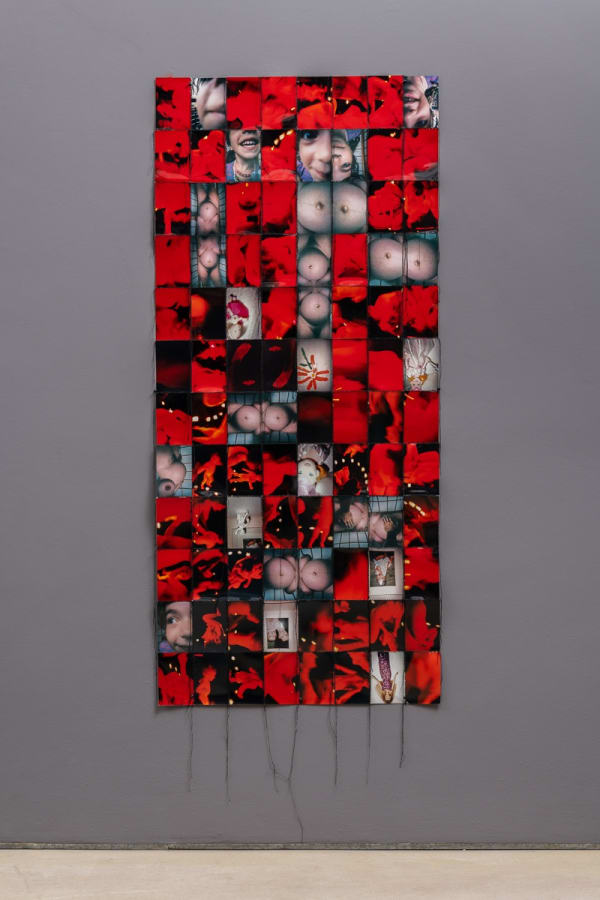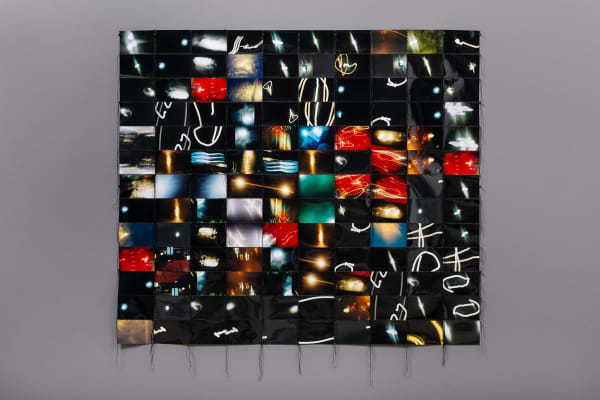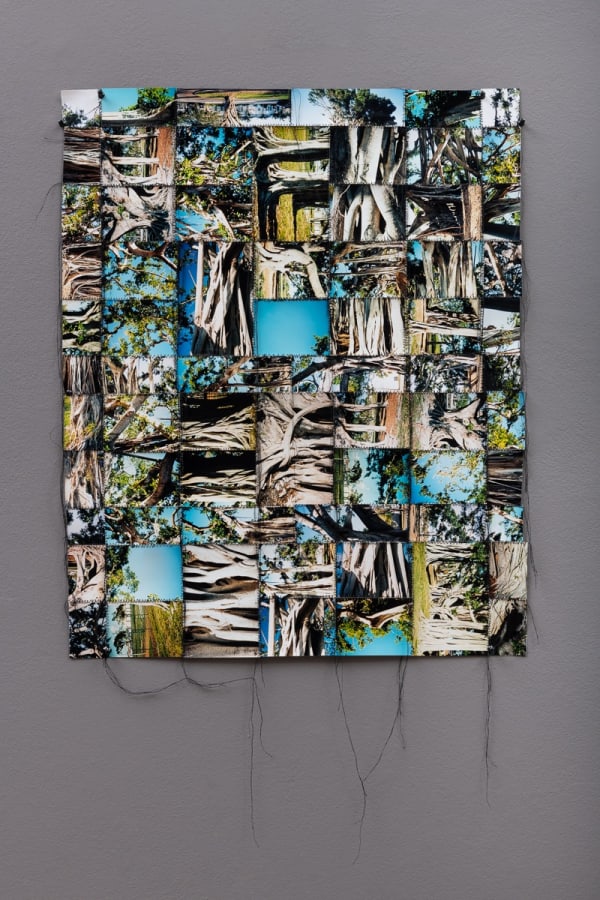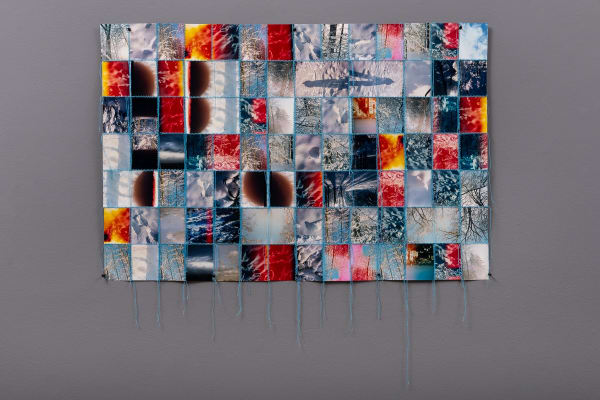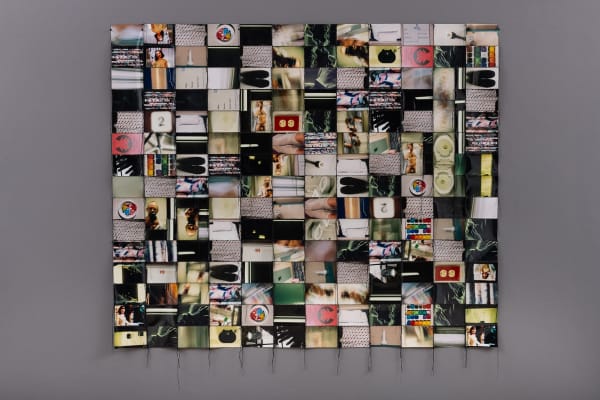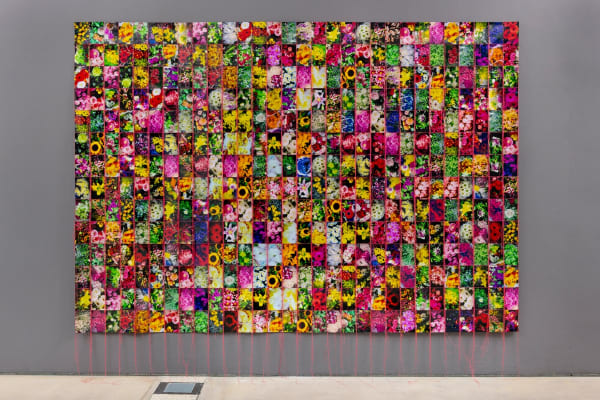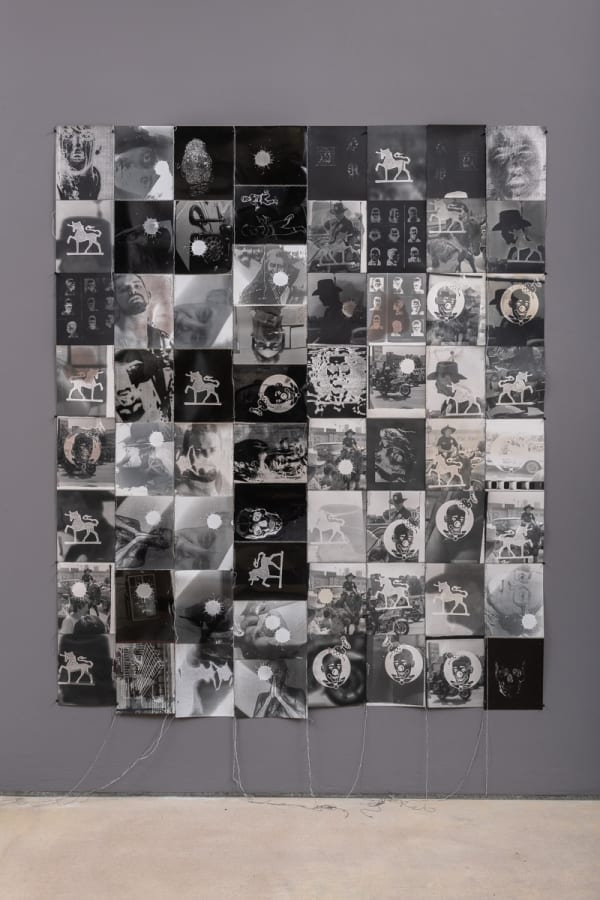Hunter Reynolds: Love Light
“Art has always been one of the tools I have used to heal myself and others and to find order in the chaos of my life, by not telling the story through art, but by transforming myself in the process of making it, using it to rebuild my life, finding hope and beauty and a desire to be alive.” Hunter Reynolds [1]
Hales is delighted to announce Love Light, Hunter Reynolds’ first solo exhibition with the gallery. Through intimate moments, the exhibition explores symbolic dedications to past friends, family and lovers. The artworks presented in Love Light contribute to the portrayal of the artist as a survivor, living a life of art - a story integral to identity politics and the history of AIDS.
Reynolds’ practice is concerned with issues of gender, sexuality, HIV/AIDS, politics, mortality and rebirth through performance, photography, installations and his alter ego, Patina du Prey. His work is directly influenced by his own lived experiences as an HIV-positive gay man living in the age of AIDS. As a member of Act-Up (Aids Coalition to Unleash Power) and a co-founder of Art Positive (an affinity group fighting homophobia and censorship in the arts), he uses his work to spread a message of survival and hope. After discovering in 1989 that he had been HIV positive since 1984, Reynolds was inspired by the advice of his friend, the artist Ray Navarro, to not let his disease control him but to take it inside his body and live it. It was at this point that Reynolds ‘realized that my work had to do with this experience of death, emotions, and that I wanted people to feel, to experience pain and loss, but also to have hope in life.’ Love Light focuses on work made from this period of empowerment to the present day: tracing memories, moments, and creating a nuanced expression of the illness, including the often-overlooked love, beauty and tenderness of friendships and erotic romance in the context of mortality.
Forming a major part of this exhibition are Hunter Reynolds’ photo-weavings, which he considers as metaphorical ‘portraits of loss, people, memorials, lovers, and myself.' Created in the early 1990s, the first weaving was composed for friend and fellow artist Jack Brusca, who referred to a wall in his own studio which was covered in photos of friends, family and lovers - many of whom were HIV positive or had died from AIDS - as the ‘wall of angels’. When Brusca’s health deteriorated, confining him to hospital, Reynolds re-photographed the wall of angels, sewing them into a quilt that he then laid on the next empty hospital bed. The hospital bed frames incorporated into the artworks in Love Light recall this history, transforming the weavings into poetically sculptural forms. Though the emptiness of the bed is haunting, the quilts act as an emotional healing: initially intended for his friend and now the viewer.
In these enigmatic and allusive weavings personal objects, body parts, x-rays and places are hinted at through sewn together images, creating a transcendental quality. The photographs are accumulated from the artist’s archive, which is a critical element to Reynold’s practice. Throughout his career he has avidly assembled newspaper clippings and snapshots in an attempt to collect “the pieces of my life.” The concept of the archive is also prevalent in the semi-transparent curtains which divide the gallery space in Love Light, the imagery being taken from his extensive collection of photographs from the late 1980s, acting as a personal historical reference to his time of activism with Act Up.
The honest and affecting photographic tapestries universalise Hunter Reynolds’ lived experience, inviting the viewer to look closely at individual photographs of personal moments, then to step back to take in a vast quasi-abstract scape of the human condition. Love Light is a testament to a dedicated, empowered practice; by bringing together the intimate and the public, the visual and verbal, the abstract and the didactic, this exhibition affirms the importance of Reynolds’ transformative revelation, of the possibility for a courageous art filled with both pain and hope.
Hunter Reynolds (b. 1959) was an early member of ACT UP and in 1989 co-founded Art Positive, an affinity group of ACT UP that fought homophobia and censorship in the arts. He has been the subject of numerous solo exhibitions including at Hallwalls, Buffalo; White Columns, New York; Artist Space, New York; Participant Inc., New York; ICA Boston; Yerba Buena Center for the Arts, San Francisco; and DOCUMENTA, Kassel, Germany. He has been included in group exhibitions at the New Museum of Contemporary Art, New York; Aldrich Museum of Art, Ridgefield; Akademie der Künste in Berlin, Germany and more. Reynolds’ work is currently the focus of a solo exhibition at Hales Gallery, London. In 2017, Reynolds was awarded a Guggenheim Fellowship.
[1] Denson, G. Roger. Hunter Reynolds: Art as Survival in the Age of AIDS, 2011

